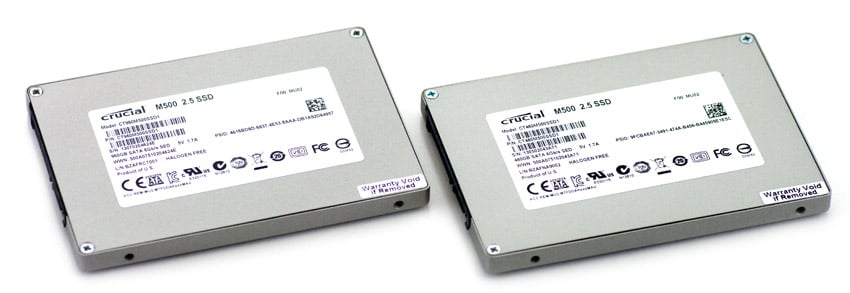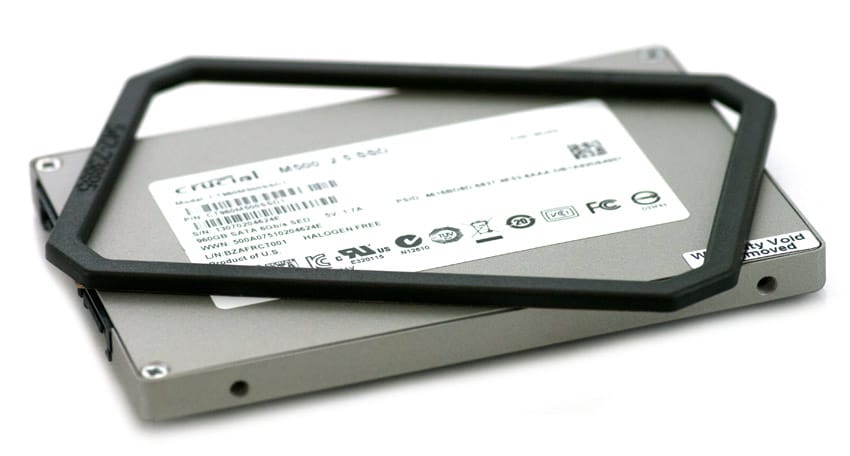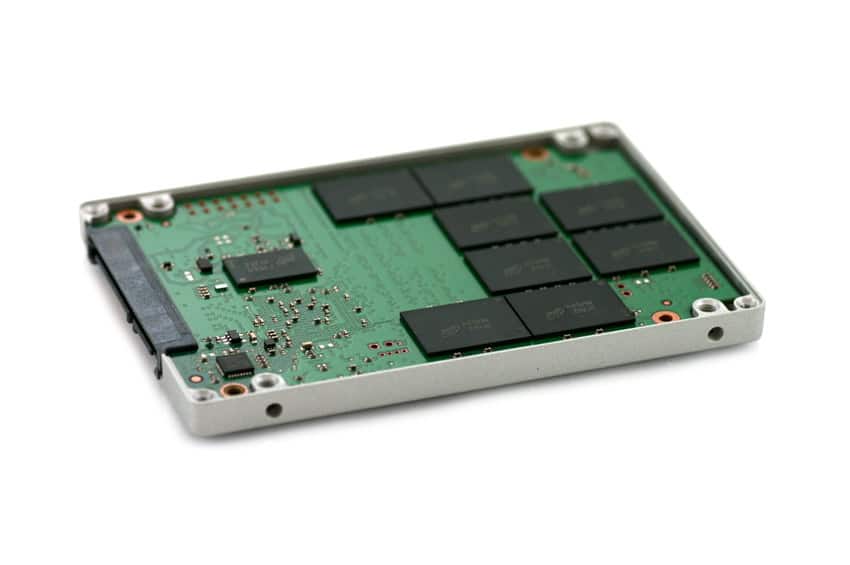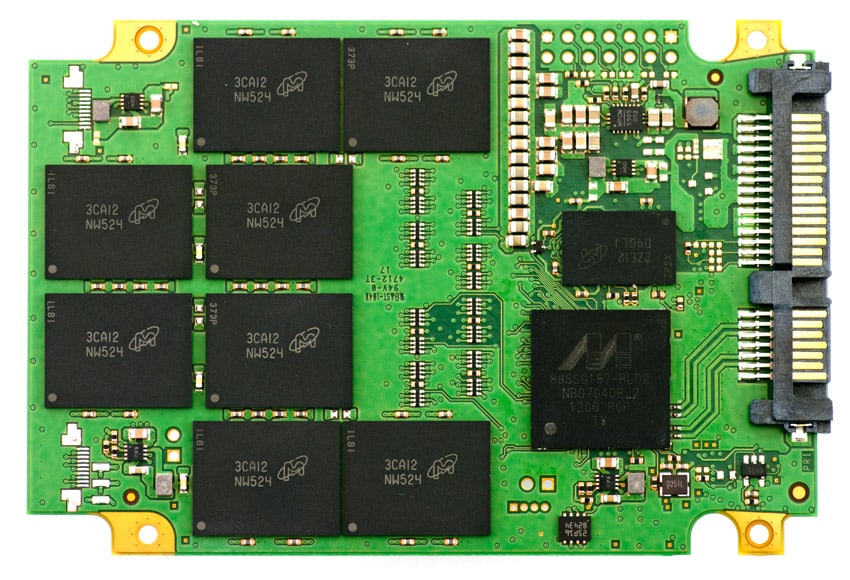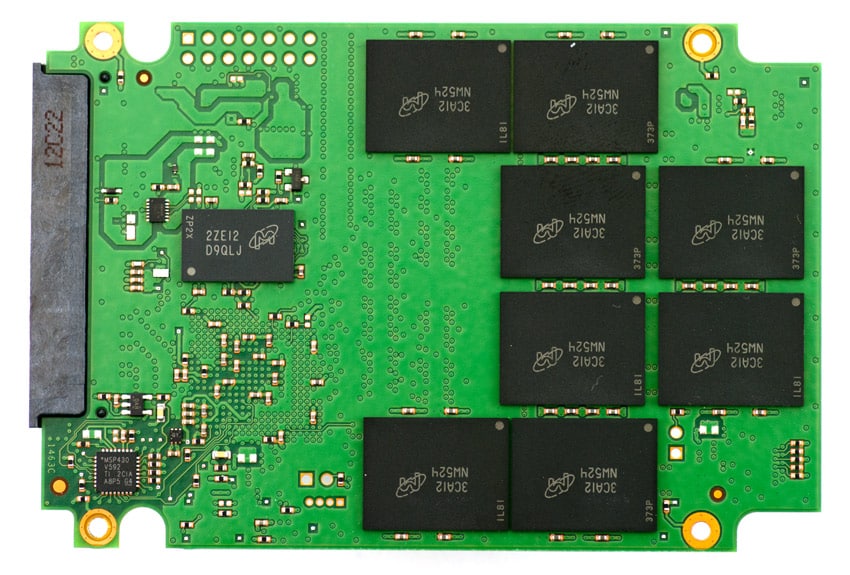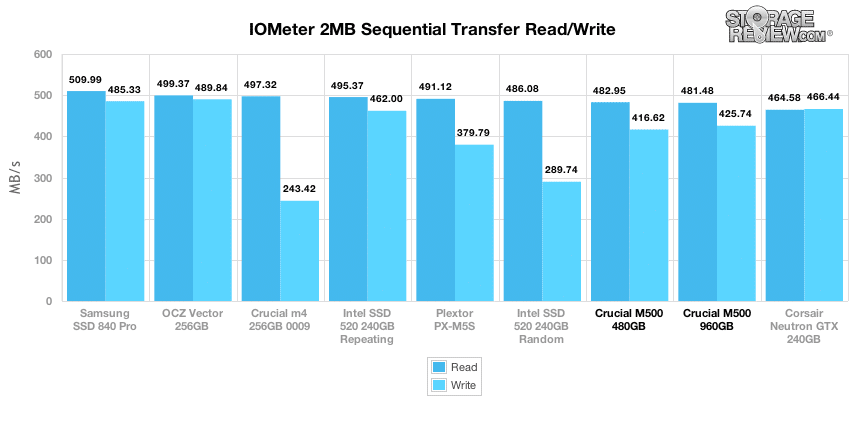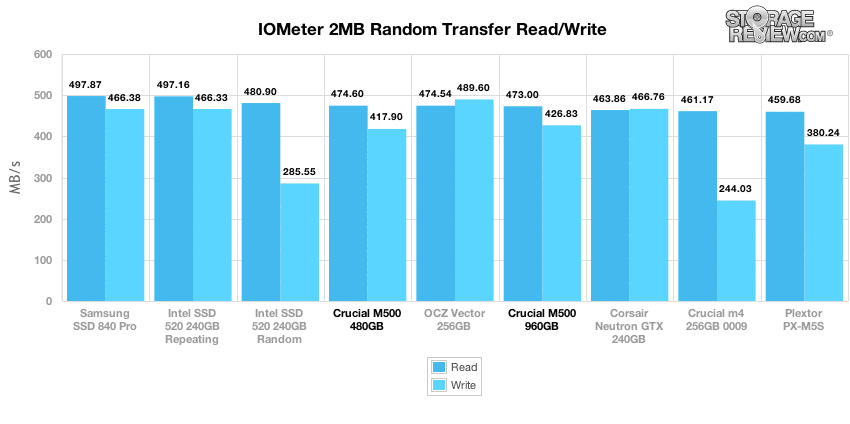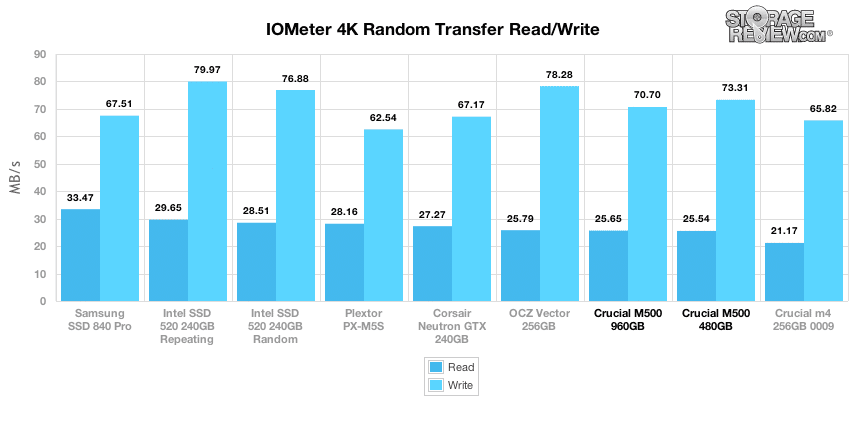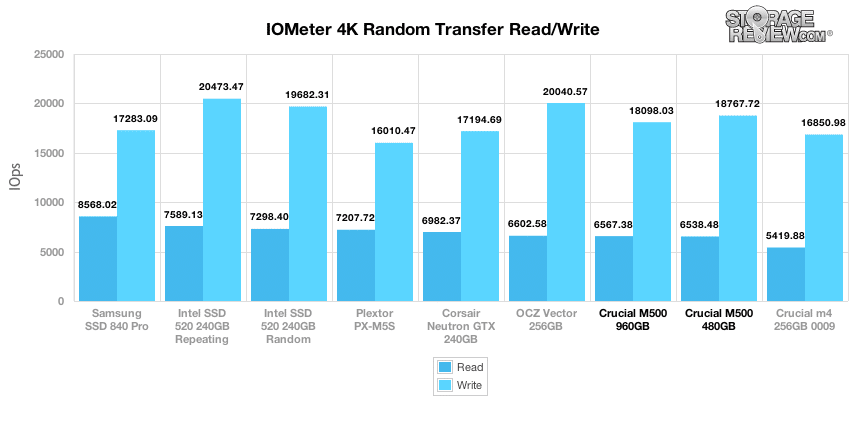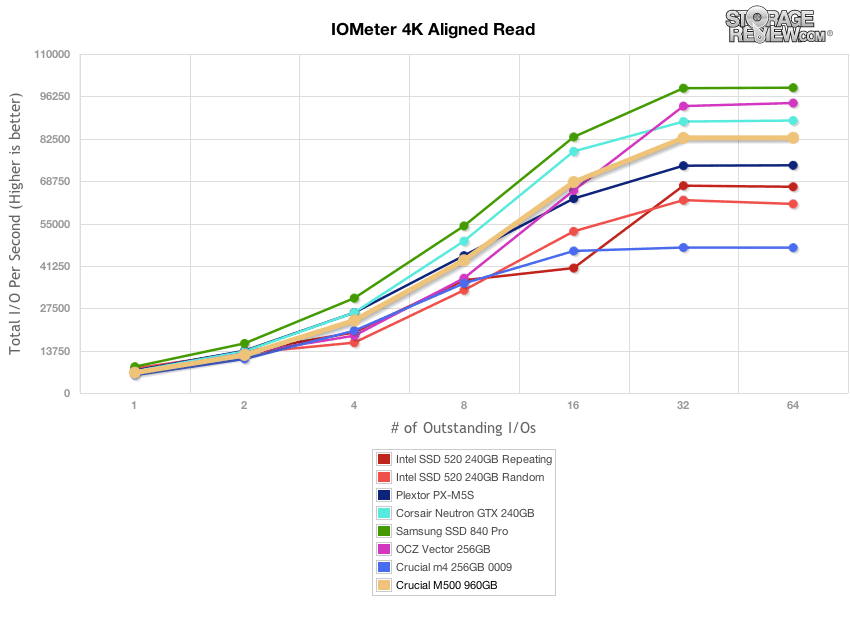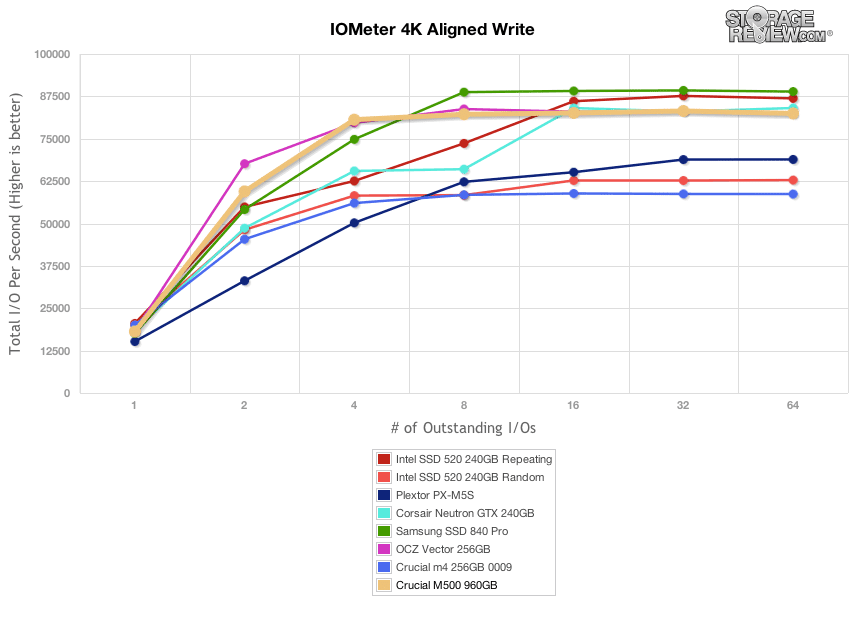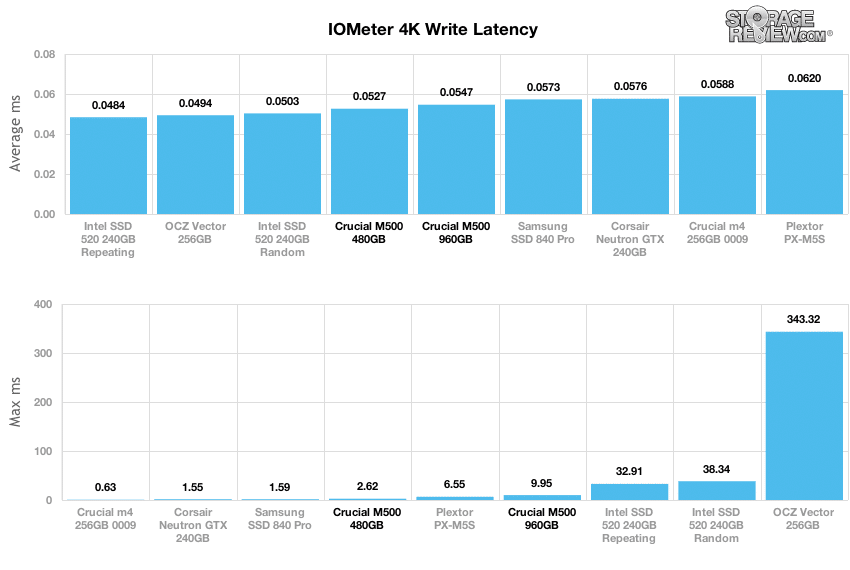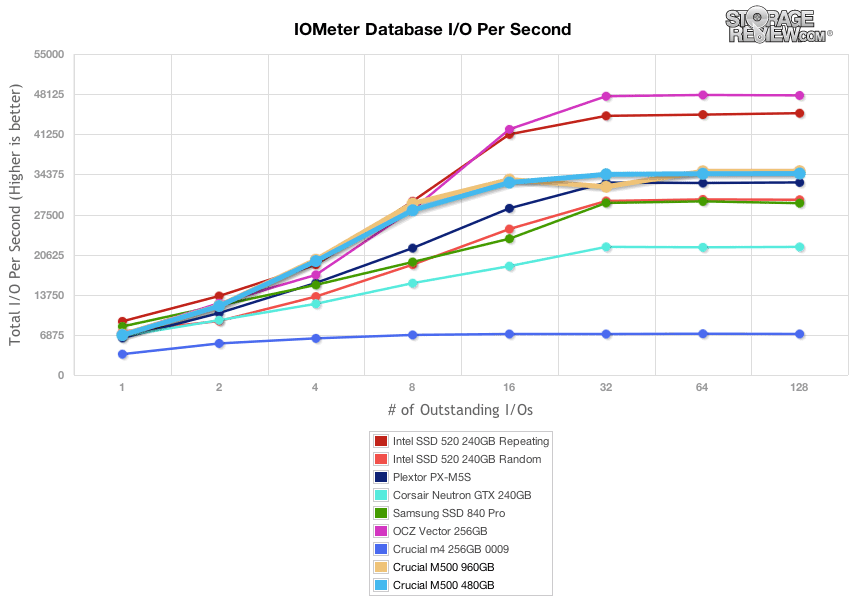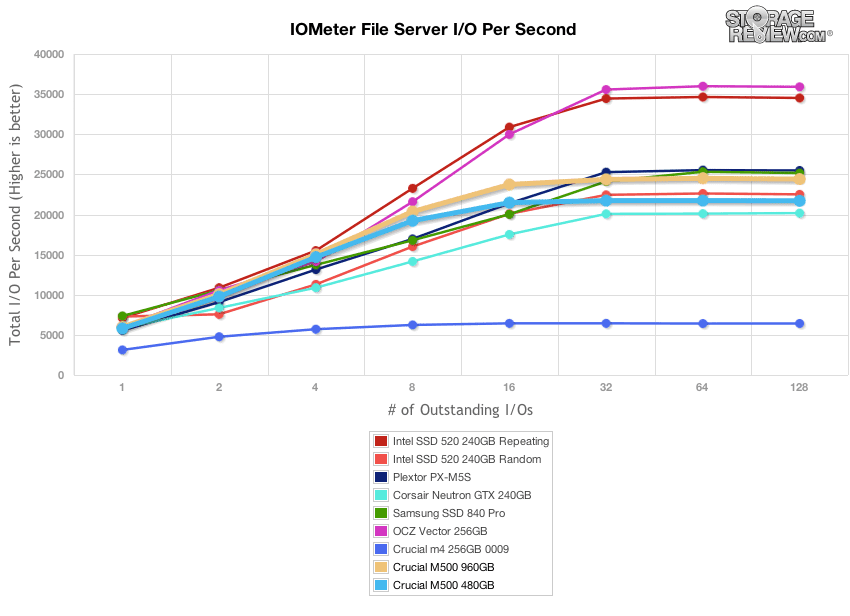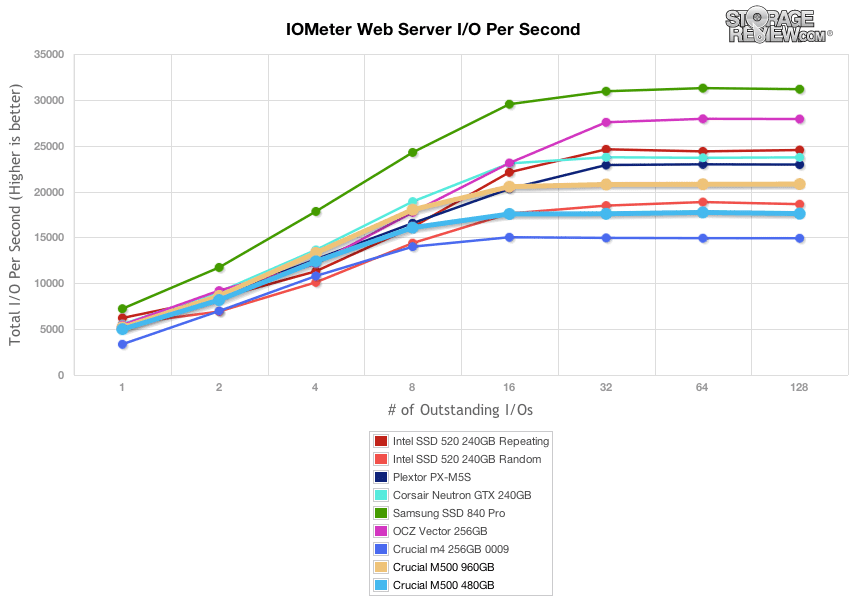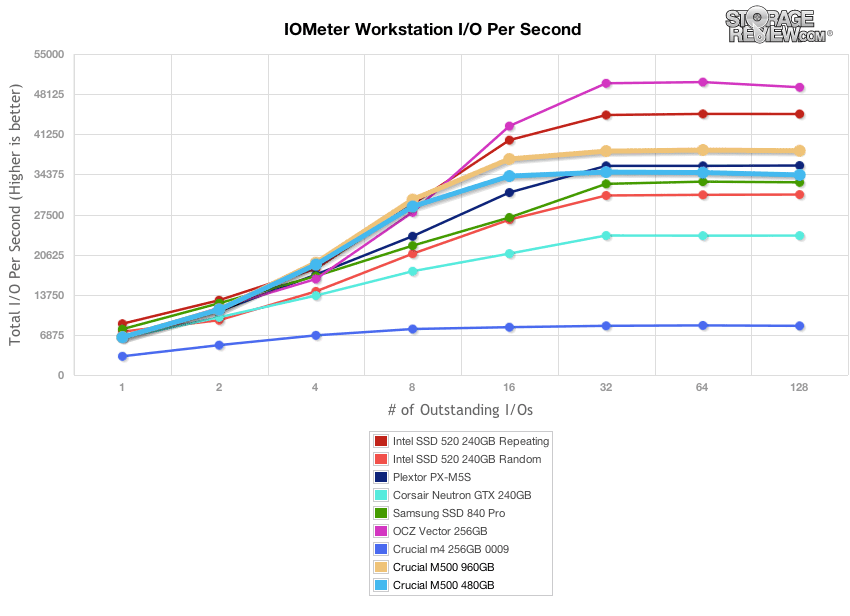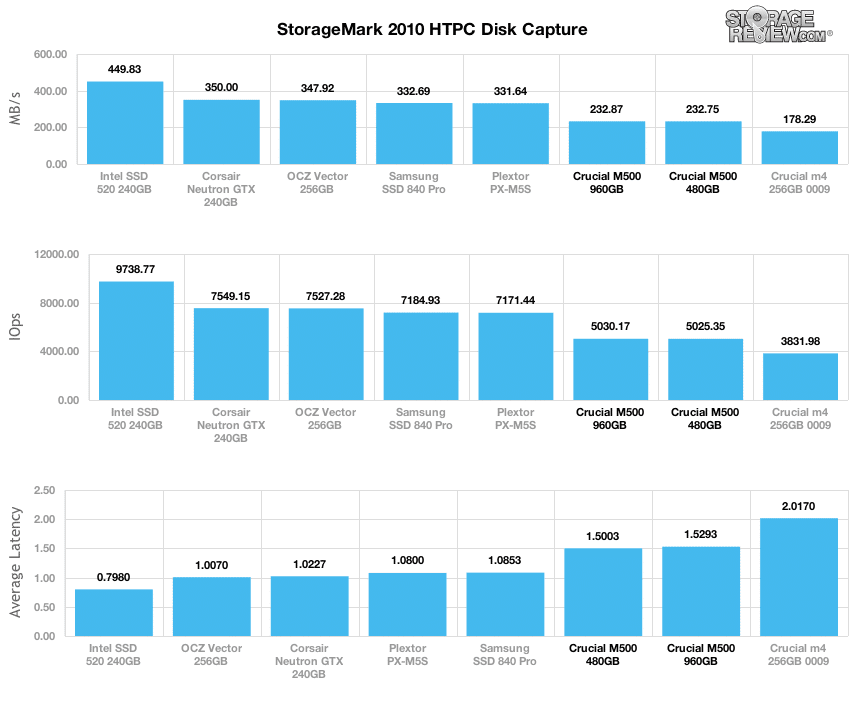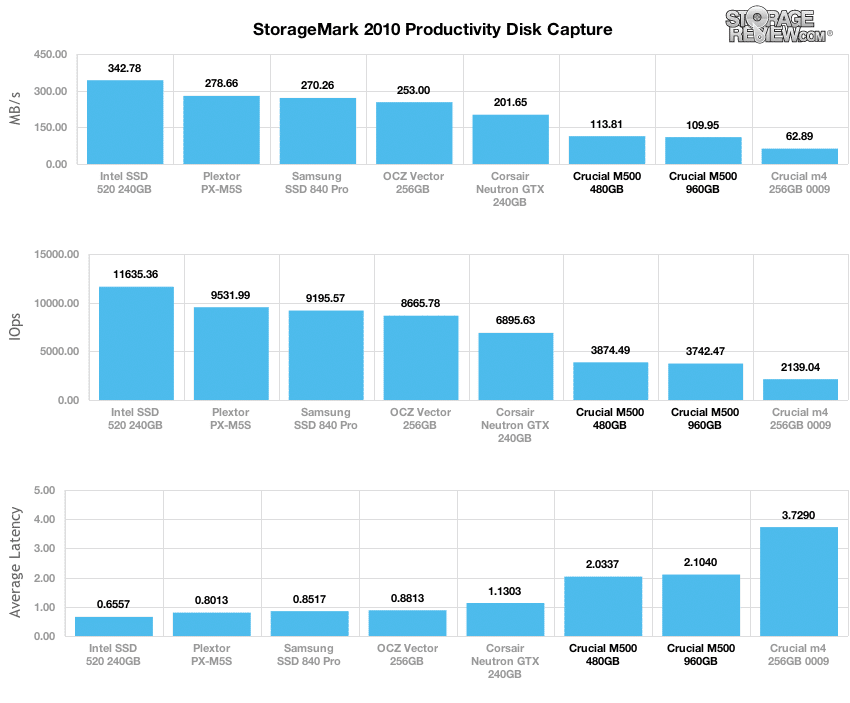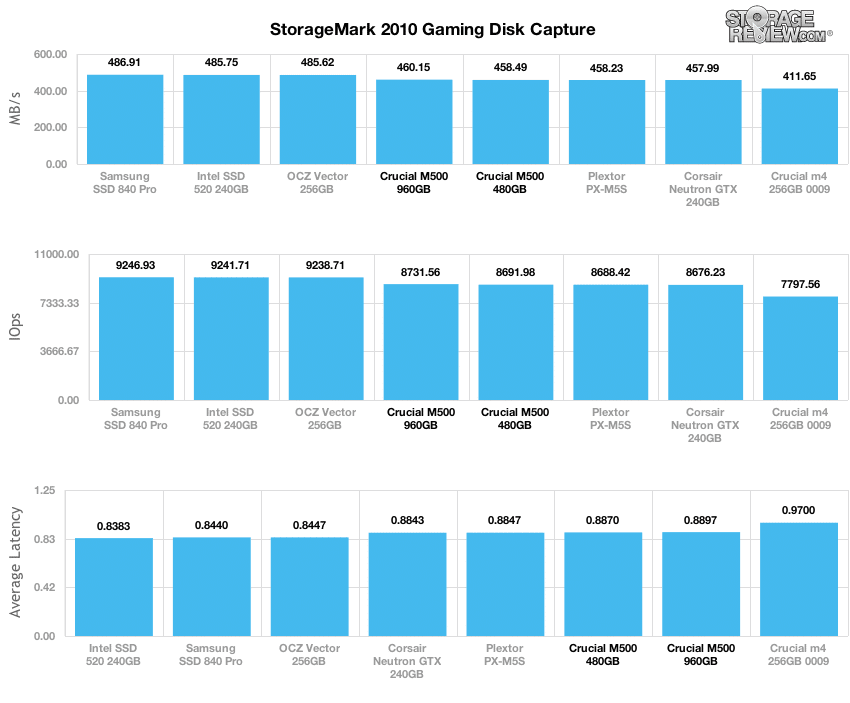
The Crucial M500 (and the OEM-tailored Micron M500) are a new mainstream SSD family that offers a SATA 6Gb/s interface, Marvell controller, 7mm drive height and Micron’s latest 20nm MLC NAND. Along with the top-level hardware components, the Crucial M500 comes with Micron’s firmware which is made in-house. The M500 builds on a longstanding heritage of reliability and compatibility – Micron’s calling cards with both their consumer and enterprise SSDs. What makes the M500 family unique though isn’t blazing burst speeds; this time the story is more about price and capacity. The M500 is the first mainstream SSD that offers a drive at the near terabyte capacity, 960GB. The suggested MSRP is under $600 as well, which while still expensive, presents the market with the first viable opportunity from a trusted brand to go SSD-only. What’s more, this is all within a 7mm drive body, which makes the M500 a solid fit for just about any client computing platform.
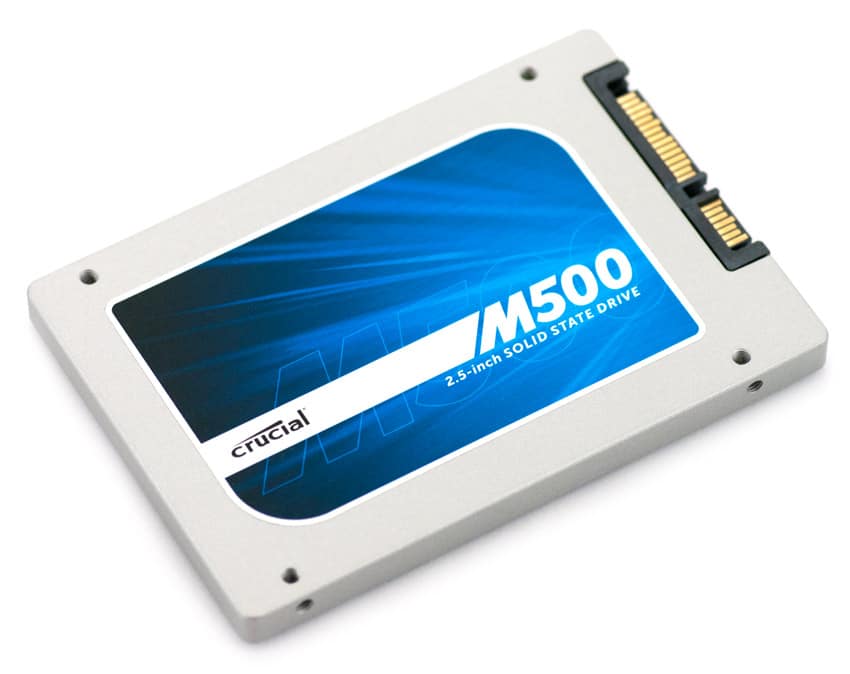
The Crucial M500 offers some enhanced features over previous models as well as different form factor options for different applications. To start, the M500 now features device sleep (DEVSLP), which Micron says draws an average of 150mW during active use and only 5mW during sleep mode. On top of that, Micron states that the time to ready for the M500 is drastically faster than its previous generation models. The time is down to 0.2s, which is five times faster. As for different models, for those in the enterprise market, the Crucial M500 has a sibling in the Micron M500 that we have also reviewed. On top of that, Crucial will be offering the Crucial M500 in different form factors in Q2 of 2013. The drive will be available in an mSATA and M.2 form factor. The M.2 form factor that we mentioned in our news coverage of the new Micron and Crucial SSD family is 80mm x 22mm. Those mSATA and M.2 drives will be offered in all capacities except the 960GB model.
The Crucial M500 is available in capacities of 120GB, 240GB, 480GB and 960GB and comes with a three year warranty. MSRP pricing is set at $129.99, $219.99, $399.99, and $599.99 respectively.
Crucial M500 Specifications
- Micron 20nm MLC NAND Flash
- RoHS-compliant package
- SATA 6 Gb/s interface
- TCG/Opal 2.0-compliant self-encrypting drive (SED)
- Hardware-based AES-256 encryption engine
- ATA modes supported
- PIO mode 3, 4
- Multiword DMA mode 0, 1, 2
- Ultra DMA mode 0, 1, 2, 3, 4, 5
- Industry-standard, 512-byte sector size support
- Hot-plug/hot-remove capable
- Device Sleep (DEVSLP), extreme low power mode
- Native command queuing support with 32-command slot support
- ATA-8 ACS2 command set compliant
- ATA security feature command set and password login support
- Secure erase (data page) command set: fast and secure erase
- Sanitize device feature set support
- Self-monitoring, analysis, and reporting technology (SMART) command set
- Windows 8 drive telemetry
- Adaptive thermal monitoring
- Performance
- PCMark® Vantage (HDD test suite score): up to 80,000 IOPS
- Sequential 128KB READ: up to 500 MB/s
- Sequential 128KB WRITE: up to 400 MB/s
- Random 4KB READ: up to 80,000 IOPS
- Random 4KB WRITE: up to 80,000 IOPS
- READ/WRITE latency: 5ms/25ms (MAX)
- Reliability
- MTTF: 1.2 million device hours
- Static and dynamic wear leveling
- Uncorrectable bit error rate (UBER): <1 sector per 1015 bits read
- Low power consumption: 150mW TYP
- Endurance: Total bytes written (TBW): 72TB
- Capacity (unformatted): 120GB, 240GB, 480GB, 960GB
- Mechanical
- SATA connector: 5V ±10%
- Dimensions: 100.45mm x 69.85mm x 7.0mm
- Weight: 70g
- Secure firmware update with digitally signed firmware image
- Operating temperature: Commercial (0°C to +70°C)
Design and Build
The Crucial M500 has a similar yet more refined exterior than the previous generation m4. The front features a new sticker that labels the drive with Crucial model branding. The top of the case has a smooth yet enduring case. The SSD is also finger-print-free top and bottom. Here is where the SSD’s typical simple barcode sticker is. It gives users information about the model and says it’s a product of the US.
The side profiles present the screw holes that enable the drive to be mounted properly. Finally, while many drives are still 9.5mm, the M500 has a slim 7mm profile. Coupling that with the included spacer for 9.5mm applications, and the M500 fits well in the 7mm ultrabook space or in most any other application. The drive is rounded out with standard SATA power and data connectors on the front.
The Micron M500 model shares almost exactly the same design of the Crucial M500. The underside shares the same simple barcode sticker, with the lone difference being the top of the device. While the Crucial model has a branding sticker, the Micron is bare.
Disassembly
Opening up the Crucial M500 is really simple and is done by removing four screws. With the casing removed, the circuit also has four screws that when taken out provide full viewing access. The Crucial M500 960GB model utilizes a Marvell 9187 controller as well as 16 total NAND die, meaning that each NAND die is 64GB. That results in 1024GB of capacity, though the drive provides 960GB. The difference comes from Crucial erring on the side of caution by adding reliability in case of a failed NAND. Micron has already been implementing this feature into existing Micron enterprise SSDs, with this marking their first introduction of it into a Crucial SSD.
One more significant mention is that all M500 models utilize 128Gb NAND die versus the 64Gb NAND die traditionally found in SSDs. This NAND die selection is part of what enables Micron to offer their drives at such a solid price point, and it also enables them to increase the density of the drives, yielding very high capacity models.
Inside, the M500 uses 16 64GB NAND packages, equally populated across both sides of the circuit board. Powering the SSD is a Marvell 9187 controller running Micron-optimized firmware.
Consumer Synthetic Benchmarks
All consumer SSD benchmarks are conducted with the StorageReview Consumer Testing Platform. The comparables used for this review include:
- Corsair Neutron GTX (240GB, LAMD LM87800, Toshiba 24nm toggle NAND, SATA)
- Intel SSD 520 (240GB, SandForce SF-2281, Intel 25nm NAND, SATA)
- Samsung SSD 840 Pro (512GB, 300mhz Samsung 3-core MCX controller, Samsung 2x nm Toggle NAND Flash, SATA)
- Plextor PX-M5S (256GB, Marvell 9174, Micron 25nm MLC NAND, SATA)
- Crucial m4 (256GB, Marvell 9174, Micron 25nm MLC NAND, SATA)
- OCZ Vector (256GB, Indilinx IDX500M00-BC Barefoot 3, 25nm MLC NAND, SATA)
All IOMeter figures are represented as binary figures for MB/s speeds.
In our first test measuring 2MB sequential performance, the 960GB Crucial M500 measured 481MB/s read and 416MB/s write, having slightly less read speed that other models with the exception of the Corsair Neutron GTX. Write speed improved over the m4 and Plextor M5S, although it still trailed some of the faster mainstream models.
In our next test looking at 2MB random transfer performance, the 960GB M500 measured 473MB/s read and 426MB/s write.
Switching to smaller 4K random transfers, the 960GB Crucial M500 measured 18,098 IOPS read at QD1, which ranked upper middle of the pack. Write speed measured 6,567 IOPS, which ranked towards the lower middle of the pack.
In our next test, we shift to a smaller 4k random workload with 100% read activity that scales from 1QD to 64QD. In this setting the 960GB M500 scaled from 6,500 IOPS up to nearly 83,000 IOPS.
Shifting focus to write activity, the M500 performed higher than m4, and ranked towards the middle of the pack measuring 18,000 IOPS at QD1 and peaking at just over 83,000 IOPS at QD32.
Comparing average write latency between each mainstream consumer SSD, the Crucial M500 ranked middle of the pack with a time of 0.0547ms and an ultra-low peak latency of 2.62ms.
Our last series of synthetic benchmarks compare the hard drives in a series of server mixed-workloads with a queue depth of ranging from 1 to 128. Each of our server profile tests has a strong preference towards read activity, ranging from 67% read with our database profile to 100% read in our web server profile. In all of our mixed workloads the Crucial M500 ranked middle of the pack except the Web Server profile where it trailed behind all except the m4 and Intel SSD 520 with incompressible data.
The first is our database profile, with a 67% read and 33% write workload mix primarily centered on 8K transfer sizes.
The next profile looks at a file server, with 80% read and 20% write workload spread out over multiple transfer sizes ranging from 512-byte to 64KB.
Our web server profile is read-only with a spread of transfer sizes from 512-byte to 512KB.
The last profile looks at workstation activity, with a 20% write and 80% read mixture using 8K transfers.
Consumer Real-World Benchmarks
For the average consumer, trying to translate random 4K write speeds into an everyday situation is pretty difficult. It helps when comparing drives in every setting possible, but it doesn’t exactly work out into faster everyday usage or better game loading times. For this reason we turned to our StorageMark 2010 traces, which include HTPC, Productivity, and Gaming traces to help readers find out how a drive might rank under their conditions.
The first real-life test is our HTPC scenario. In this test we include: playing one 720P HD movie in Media Player Classic, one 480P SD movie playing in VLC, three movies downloading simultaneously through iTunes, and one 1080i HDTV stream being recorded through Windows Media Center over a 15 minute period. Higher IOps and MB/s rates with lower latency times are preferred. In this trace we recorded 2,986MB being written to the drive and 1,924MB being read.
In our HTPC profile the Crucial M500 offered performance greater than the m4, but still came in below the other competing consumer SSDs with an average speed of 232MB/s.
Our second real-life test covers disk activity in a productivity scenario. For all intents and purposes this test shows drive performance under normal daily activity for most users. This test includes: a three hour period operating in an office productivity environment with 32-bit Vista running Outlook 2007 connected to an Exchange server, web browsing using Chrome and IE8, editing files within Office 2007, viewing PDFs in Adobe Reader, and an hour of local music playback with two hours of additional online music via Pandora. In this trace we recorded 4,830MB being written to the drive and 2,758MB being read.
In our Productivity trace the M500 again performed much greater than the m4 with an average speed of 109MB/s, although competing models measured between 201-342MB/s.
Our third real-life test covers disk activity in a gaming environment. Unlike the HTPC or Productivity trace, this one relies heavily on the read performance of a drive. To give a simple breakdown of read/write percentages, the HTPC test is 64% write, 36% read, the Productivity test is 59% write and 41% read, while the gaming trace is 6% write and 94% read. The test consists of a Windows 7 Ultimate 64-bit system pre-configured with Steam, with Grand Theft Auto 4, Left 4 Dead 2, and Mass Effect 2 already downloaded and installed. The trace captures the heavy read activity of each game loading from the start, as well as textures as the game progresses. In this trace we recorded 426MB being written to the drive and 7,235MB being read.
In our read-intensive Gaming trace, the Crucial M500 ranked near the middle with an average speed of 460MB/s, coming in ahead of the Plextor M5S and the Corsair Neutron GTX.
Power Consumption
As SSDs spend much of their time in the idle state, low idle power consumption is a key factor in overall SSD power management. The M500 is stated as having a typical power consumption of 150mW.
In our tests we measured idle power consumption from the Crucial M500 960GB at 1.15 watts, with the highest measured total at 4.63 watts during sequential write activity. With the M500 480GB, we noted slightly less power used across the board, although for both models we found power usage in our desktop environment to be greater than 150mW.
Conclusion
The Crucial M500 is a mainstream SSD that packs a huge capacity of up to 960GB for a hair under $600. The drive is geared toward users who want to obtain the performance of an SSD while still trying to fill a capacity gap traditionally found between them and HDDs. The M500 utilizes 16 NAND die at 64GB each, and it also offers security by providing 960GB of storage instead of the full 1024GB it could offer which keeps the drive safe in case of NAND failure. To reach its near-1TB capacity, Micron utilizes 128Gb NAND instead of the industry-common 64Gb variety, which gives it a pricing edge but also is the reason behind some of its performance limitations.
This drive was clearly designed with price and capacity being the foremost features, yet it still offers modest performance as well. The drive comes in under $600 for nearly one full TB of capacity. That’s an impressive claim that no other brand can yet assert. Additionally, it still managed solid performance figures, pushing 481MB/s read and 425MB/s write and having peak random I/O throughput clock in at about 83,000 IOPS read and write. In our mixed workloads, it was able to rank towards the middle of the pack, while it trailed in our real-world traces. For most buyers shopping with price and capacity as their main need and performance as the next priority, the M500 is hard to beat even in the value-SSD segment.
With the launch of the M500, Crucial set the stage for lower cost, high-capacity SSDs. Boutique SSDs with a higher capacity have existed, but with a substantially higher price as well as questionable reliability and support. The M500 comes in at a wallet friendly $0.61/GB figure for its 960GB version at launch, which up until now has only been touched by extreme sales or blowout pricing.
Pros
- Highest capacity of any mainstream consumer SSD
- Very attractive pricing, sub $600 for 960GB
- Excellent performance/cost ratio
Cons
- Weaker performance than other mainstream SSDs
Bottom Line
The Crucial M500 is the first consumer SSD model offering a near-terabyte capacity, and it does so while still providing solid performance and an extremely low price point.

